Exploration and research progress on ion-adsorption type REE deposit in South China
2018-01-13DenghongWngZhiZhoYngYuJingjingDiMochunDengTingZhoLijunLiu
Deng-hong Wng, Zhi Zho,*, Yng Yu, Jing-jing Di, Mo-chun Deng, Ting Zho, Li-jun Liu
a MNR Key Laboratory of Metallogeny and Mineral Assessment, Institute of Mineral Resources, Chinese Academy of Geological Sciences, Beijing 100037, China
b Geological Survey Team of Gannan, Bureau of Geology and Mineral Exploration and Development of Jiangxi, Ganzhou 341000, China
ABSTRACT
Since 2011, certain advances have been made through the resource investigation, metallogenesis research,mining supervision and environmental protection of ion-adsorption type rare earth element (REE) deposit in South China. Firstly, some progress has been made in REE prospecting in Jiangxi, Guangdong, Guangxi and Yunnan. REE deposits are not only found within the weathering crusts of granites and felsic volcanic rocks, but also within the weathering crusts of epimetamorphic rocks and basic magmatic rocks. Secondly,the methods of exploration, delineating ore bodies and calculation of reserves have been improved, which intuitively reflect the thickness, REE composition and value of weathering crust. Thirdly, the relationship between REEs and weathering degree and the rule of distribution, migration and enrichment of REEs in the weathering profile was summarized through the analysis of big data, which can predict the metallogenetic horizon of REEs. Fourthly, a method for quick, accurate and dynamic investigation of the REE deposit has been established by using high resolution remote sensing technology. Finally, the relation between the production status of REE mines and water pollution has been revealed based on long-term hydrochemical monitoring data of rivers and wells in mines and surrounding areas.
Keywords:
Ion-adsorption type REE deposit
REE prospecting
Ore delineation method
High resolution remote sensing technology
Hydrochemical monitoring
1. Introduction
Ion-adsorption rare earth element (REE) deposit in South China is one of the most valuable types of REE deposits for supplying most of the heavy REEs (HREEs) for global consumption, while HREEs are scarcer and much more precious than LREEs on the Earth.
In 1969, the so-called “ion-adsorption type” REE deposit was first discovered in granite weathering crust in Longnan,Jiangxi, China, which is different from the “mineral-type ”REE deposits in Bayan Obo, North China, and Mountain Pass, the United States and so on. The name implies that REEs of ion-adsorption type REE deposits mainly exist in ion-exchangeable phases and can be extracted with electrolytic solutions e.g. NaCl and (NH4)2SO4(Yang YQ et al., 1981; Bai G et al., 1989; Wu CY et al., 1990; Bao ZW and Zhao ZH, 2008). This kind of deposits is rich in HREEs, such as Eu, Dy and Tb, and is easy to be mined, which makes it unparalleled compared to other kinds of REE deposits. Hence,ion-adsorption REE products, when exported to Japan,Europe and USA since 1983, were universally embraced(Ding JY, 2012). Ion-adsorption type REE deposits have been gradually recognized across the globe. REE mining expanded rapidly in Jiangxi Province from 1986 to 1995 in such a situation, and a few deposits were discovered and explored in Guangxi, Guangdong, Fujian, Hunan and Yunnan Provinces.Remarkable achievements in the geochemical behavior of REE in weathering crust had been achieved (Bai G et al.,1989; Yang ZM, 1987; Huang DH et al., 1988; Chen DQ et al., 1990; Wu CY et al., 1989, 1990, 1993; Zhang ZH, 1990).In 1991, ion-adsorption REE minerals were classified as national specific mining-protection minerals in China.However, these minerals were still exploited as a large scale from 1996 to 2009 due to the selling like “hot cakes”. After three decades of over-exploitation and disordered mining,precious resources were quickly consumed and the environment was seriously damaged.Under such circumstances, China began to strengthened survey of REE resources since 2011. This paper provides a progress report on the exploration, metallogenesis, supervision and environmental investigation of ion-adsorption type REE deposits in South China.
2. REE resources
2.1. REE resources in the world
REE resources are mainly distributed in a few countries in the world, including China, Brazil, Vietnam, Russia, India,Australia, Greenland and the United States (U.S. Geological Survey, 2018). Primary REE deposits mainly occur in alkaline-carbonatites. Bayan Obo, China (Fan HR et al., 2016;Zhang SH et al., 2017), Mountain Pass, United States (Castor,2008) and Weld Mountain, Australia are the three largest primary REE deposits in the world, which account for about 40% of the world total REE production. Exogenetic REE deposits are mainly placer deposits and they often occur along the coastlines, ion-adsorption type REE deposits are also of this type, but they only exist in certain environments. In the past, byproduct monazite has been recovered from placers in Australia, Brazil, India, Malaysia, Thailand, China, New Zealand, Sri Lanka, Indonesia, Zaire, Korea, and the United States. More recently, monazite has been recovered from coastal and alluvial placers in India, Malaysia, Sri Lanka,Thailand, and Brazil (Debashish S and Bradley SVG, 2016).Ion-adsorption type REE deposits are first discovered in South China and recently also been recognized in some other countries where subtropical climate and slow erosion rates generates to different scales of REE deposits (Sanematsu K and Watanabe K, 2016).
REE deposit has been explored all over the world in recent years, i.e. Malawi Project, Tantalus Project in Madagascar, Serra Verde Project in Brazil and Prospects in N.Vietnam, Thailand, Philippines, E. America (Sanematsu K and Watanabe K, 2016). A few deposits and potential prospects are recently discovered in these countries(Sanematsu K et al., 2009, 2013, 2015, 2016; Imai A et al.,2013; Maulana et al., 2014; Sanematsu K and Watanabe K,2016; Bern CR et al., 2017; Padrones JT et al., 2017).Nevertheless, the South China still provides most of the HREEs in the world.
2.2. Distribution of ion-adsorption type REE deposits in China
Ion-adsorption type REE deposits are mainly distributed in seven provinces of China, including Yunnan, Guangxi,Hunan, Jiangxi, Guangdong, Fujian and Zhejiang (Fig.1).Most deposits are enriched with LREEs, minority of which is enriched with HREEs and the rest of them are enriched with both LREEs and HREEs (Bai G et al., 1989; Yuan ZX et al.,2012). In Jiangxi, REE deposits are mainly distributed in its south areas, with the most detailed studied and fully exploited REE deposits in the world there, and are characterized by large quantities and various kinds, and fully furnished by a complete industry chain from exploitation, smelting separation to deep processing. In Guangxi Province, REE deposits are mostly located in the east and southeast of the province, with some REE deposits discovered in weathering curst of a granitic pluton in year 2016. In Guangdong Province, REE deposits are also widely distributed, with the largest number of enterprises that research and exploit REE in China. In Fujian, REE deposits are predominantly distributed in the west and south, with higher content of Eu, Gd and Tb than in similar mines in other provinces, and with Y in most mines accounts for more than 20% of total REE. In Zhejiang and Yunnan provinces, few REE deposits have also been discovered, but the research is yet limited (He XC et al.,2016).
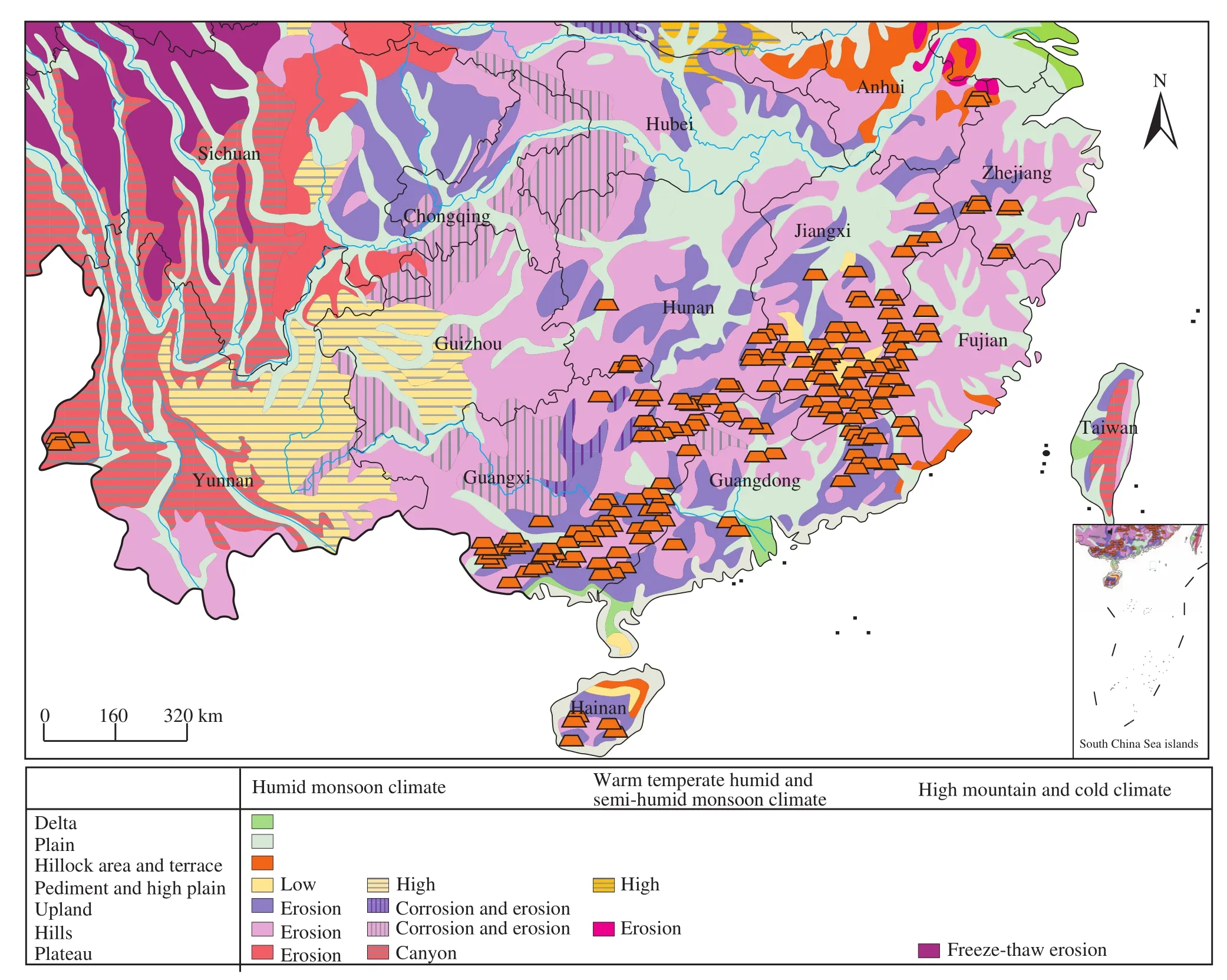
Fig. 1.Distribution of ion-adsorption type REE deposits in South China (after Yuan ZX et al., 2012).
2.3. Prospecting of ion-adsorption type REE deposits
Ever since 2011, some progress has been made in REE prospecting. For example, one HREE deposit, three LREE deposits (a large one, a medium one and a small one), 10 REE mineralized spots and 27 mineral-prospecting targets had been discovered in Jiangxi; 11 (1 HREE and 10 LREEs) REE mineralized spots had been discovered in Guangdong. In Guangxi, 20 REE target areas for further exploration had been delineated, with 7, 10 and 3 of which predicted to be large,medium and small scales respectively, based on their resource estimates. In Yunnan, three REE deposits have been found,one of which may be a promising large-scale deposit (Wang DH et al., 2017).
2.4. Exploration of ion-adsorption type REE deposits
Though ion-adsorption type REE deposits have been mined for more than three decades, the methods of exploration, delineating ore bodies and calculation of reserves have yet not caught up with the increasing development of the industry.
2.4.1. Exploration methods
The thickness of weathering profile in south Jiangxi is regionally variable from a few meters to up to 30–45 m (Zeng ZL et al., 2016). Shallow shaft (Fig. 2a) or shallow drill (Fig.2b) was the main exploration method for prospecting mineral resources in weathering crust. Drilling depth of the former is generally less than 20 m, which can not completely reveal the thickness of weathering crust and tend to miss the ore body.The depth of the latter can reach 50 m, but it is a timeconsuming, laborious method with security problems. Gannan Drill (Fig. 2c), also called Probing shovel, is a new method which could not only drill with large thicknesses (over 40 m)but also be efficient (3–10 times than Shallow shaft and Shallow drill), cost-effective (the unit price is about 1/4 of Shallow shaft and about 1/6 of Shallow drill) and much safer.At present, sampling by Gannan drill instead of shallow shaft is being widely applied in the exploration of regolith-hosted deposits (Wang DH et al., 2013; Zeng ZL et al., 2016).
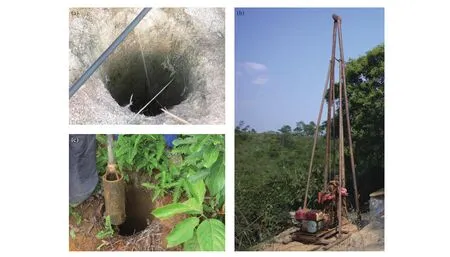
Fig. 2.Exploitation tools used in the field: a–shallow shaft; b–shallow drill; c–gannan drill.
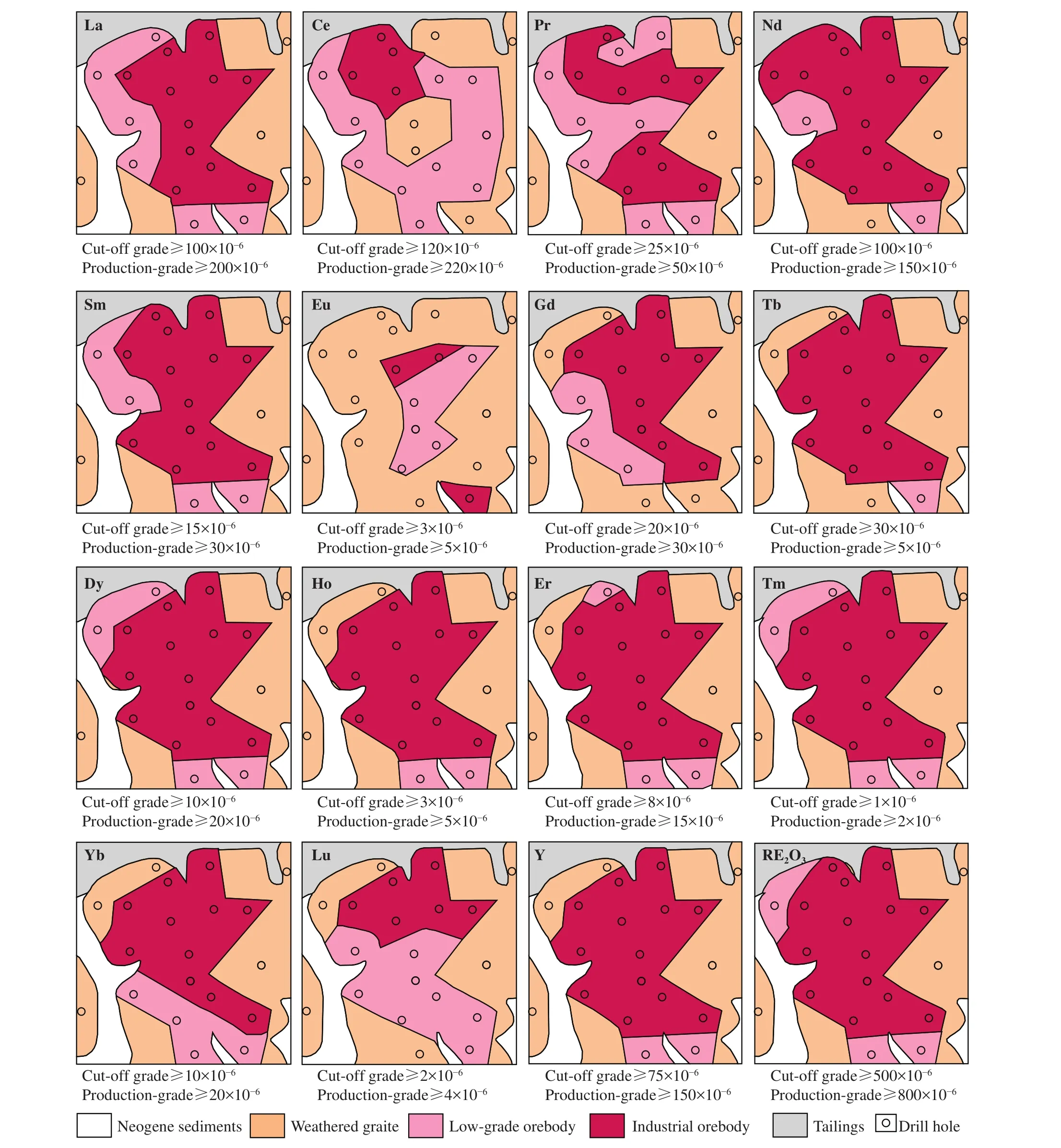
Fig. 3.REE orebodies of an ion-adsorption type REE deposit in South Jiangxi, China.
2.4.2. Method for delineating ore bodies
The REE ore body could previously only be delineated with the parameter of “total REE content” indicating the content of REE in ion-exchangeable phase, water soluble,colloidal sediment and minerals in the weathering crust (Chi RA et al., 2005). REEs are predominantly “ion-exchangeable phase” (about 40% –95% of total REE), the content and assemblage of all-phase REE cannot replace those of “ionexchangeable phase”. Now, the technology in analyzing ionexchangeable REE was upgraded, and contents of 17 rare earth elements can be measured accurately and separately. So,not only the “total ion-exchangeable REE” mineral body can be delineated, a single REE mineral body delineation can also be achieved, i.e. ion-adsorption La ore, ion-adsorption Eu ore and ion-adsorption Dy ore etc, which enables to precisely manage mineral resources and also ensures comprehensive use of low-content but high-value REEs (Deng MC et al.,2013). As shown in Fig 3, in terms of important elements like europium, a single REE delineation allows for the effective determination of the distribution range of europium mineralization, whereas otherwise europium mineralization would be delineated as a submarginal mineral when the traditional method of “total REE content” is used to delineate ore body.
2.4.3. Calculation of REE reserves
Geological block is traditionally used to estimate the reserve of ion-adsorption type REE resources, which,however, shows its disadvantages of high prospecting work load, expensiveness and low efficiency. Based on the characteristics of ion-adsorption type REE deposits and the Kriging method for soil geochemical exploration, a threedimensional model for estimating reserves of this type of deposits and the corresponding evaluation methods are developed. This model could not only estimate the volume and grade of the sample point in the weathering shell, but also directly related to the market price, and can determine the boundary grade and industrial grade according to the dynamic change of the daily market price as well (Zhao T et al., 2014,2017).
2.5. Research on ion-adsorption type REE deposit
Research on the migration and enrichment of REEs in weathering crusts was earlier abroad than at home (Balashov YA et al., 1964; Roaldset E, 1973; Nesbitt HW, 1979; Duddy LR, 1980). Limited by the analytic technique, only few studies were carried out on REE minerals in REE-rich granitic rocks in South China during 1980s and 1990s. Here we studied geochemical characteristics of REE minerals by electron technology. It was concluded that enrichment of REEs in granitic rocks involves multiple stages: magma evolution and hydrothermal alteration, and the latter is often more important than the former (Zhao Z et al., 2017a).Petrologic and geochemical characteristics of REE-rich granitic rocks in Nanling region were summarized (Zhao Z et al., 2014; Zhao Z et al., 2017a). Distribution of LREE and HREE in weathering profile has been summarized into two scenarios: during the early stage of weathering, LREEs is enriched in the upper part of the completely weathered zone(B horizon) while HREEs migrate and are enriched in the lower part of it; at the late stage, the concentration of LREE in the upper part of the profile constantly increases, so that the migration capacity is larger than that of the adsorption capacity, LREEs will migrate and gradually become enriched in the lower part of B horizon, that is to say, both LREEs and HREEs will become enriched at the same level (Zhao Z et al.,2015, 2017a). After summarizing the correlation between the chemical index of alteration (CIA) and content of REE in granitic rocks and weathering crust samples from South China, we come to a conclusion that in the case of the CIA <85%, the weathering degree is in positive correlation with the REE content, and in the case of 85% < CIA <100%, the weathering degree is in negative correlation with the REE content. The enrichment of REE and “ion-exchangeable REE”in weathering profile has been compared (Zhao Z et al.,2017b).
A new summary “8 Multiples and 3 Breakthroughs” was proposed, i.e. multiple REE types (e.g., ion-adsorption La, Eu,Dy), multiple metallogenic parent rocks (e.g., granitic rocks,felsic volcanic rocks, and epimetamorphic rocks), multiple eras (Palaeozoic and Mesozoic), multiple stratigraphic horizons (e.g., Jurassic volcanic rocks, Neoproterozoic epimetamorphic rocks), multiple patterns (e.g., granite pattern, felsic volcanic rock pattern, and epimetamorphic rock pattern) (Fig. 4), multiple prospecting marks (e.g., chemical index of alteration, loss on ignition), multiple metallogenic stage (e.g., magmatic crystallization, hydrothermal alteration,supergenesis), multiple geological occurrence (intrusive or extrusive rocks), breakthroughs in higher latitude, higher altitude and deeper survey (Wang DH et al., 2017).
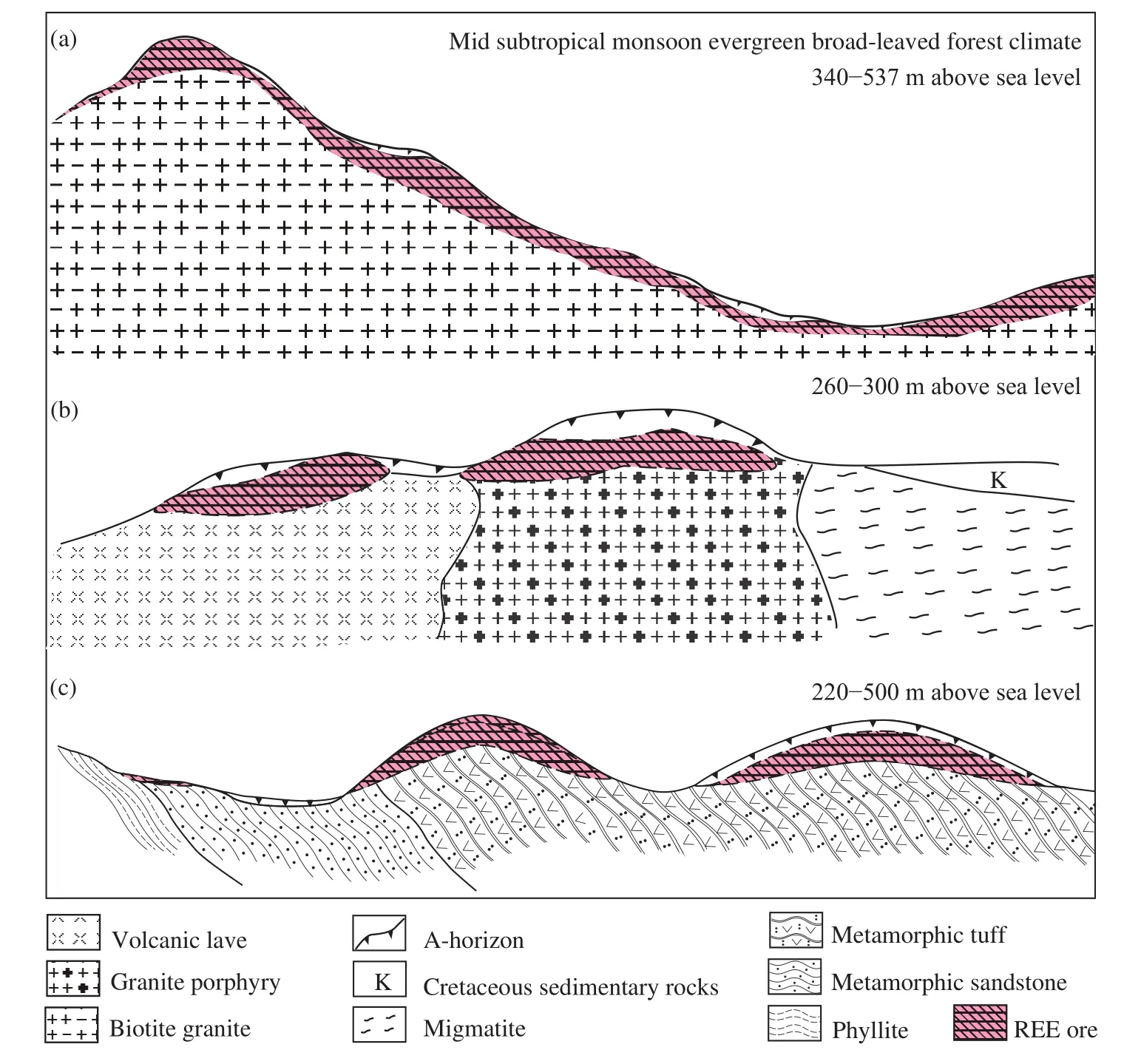
Fig. 4.Mineralization pattern of Muzishan (a) Keshutang (b) and Getengzui (c) ion-adsorption type REE deposits in South Jiangxi, China.
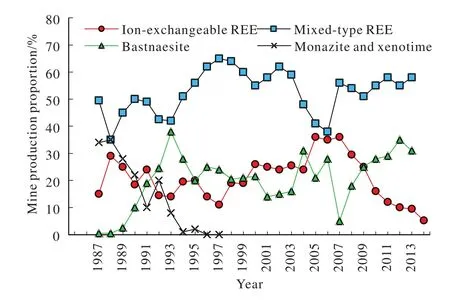
Fig. 5.Changes in exploitation of types of REE minerals in China from 1987 to 2013 (Li ZM et al., 2016).

Fig. 6.Remote sensing interpretation of suspected unauthorized mining area in South Jiangxi(with color composition of IKONOS 341 bands as an example).
3. Development and management of REE Resources
3.1. REE mining and trading
China provides more than 80% of world’s REE productions. The production and output of REE has been increasing since 2015, though the resources have been decreasing (Table 1). REE products are mostly low-end ones,and are exported mainly to USA, Japan, Netherlands, Italy,South Korea, yet the applying and processing technologies that China owns fall far behind USA, Japan and other developed countries. In 2010, the permanent-magnet and fluorescent materials with low added-value accounted for 61% of China’s consumption pattern of REE products. During the period from 2008 to 2010, 91% of REEs in USA were imported from China, 6% of which were REE products with high added-value coming from countries with limited REE,such as Japan and France. China has made an indelible contribution to the development of the world REE’s industry.

Table 1.REE production in the world and China, and China REE export from 2011 to 2017.
China owns a complete range of REE mineral products,including mixture of bastnaesite and monazite (Inner Mongolia), bastnaesite (Sichuan and Shandong), ionadsorption type REE and other types (such as monazite and xenotime in Guangdong). The proportion of the four types of REE products from 1987 to 2013 was shown in Fig 5. The mixed-type REE accounted for half of the total production,followed by ion-adsorption type REE and bastnaesite. Since 2008 the percentage of ion-adsorption REE in total REE production has dropped (Li ZM et al., 2016).
3.2. Management of REE Mining
With the demand of the global REE industry continuously increasing, unauthorized mining of ion-adsorption type REE deposits has become a more and more serious issue. How to monitor exploitation of the mines quickly, effectively and dynamically have become a vital problem to the society. High resolution remote sensing technology provides an idea for solving this problem. As shown in Fig 6, REE mining area with the red border has been delineated, and suspected illegal mining areas distributed outside the REE in the remote sensing map of IKONOS341 band clore in South Jiangxi.Obviously, remote sensing technology helps to dynamically supervise all areas, effectively control unauthorized mining,and to take active actions instead of passive actions, thus significantly elevating the public trust of government’s law enforcement (Dai JJ et al., 2014).
3.3. Investigating of Environment
The environmental pollution caused by REE mining in South China is staggering and shocking. Both the firstgeneration mountain-moving “pool-leaching” technique and the second-generation “heap-leaching” technique (1981–1995) led to serious soil erosion, desertification of land and vegetation wreck (Fig.7). The third-generation “in-situ mineral-leaching” technique is already widely applied (from 1996 until now), though it helps to reduce the visible environmental damage, this mining method still causes the unseen environmental pollution during the process of extracting REE from (NH4)2SO4leaching and NH4HCO3precipitation. We carried out an environmental geologygeochemical investigation in the REE mines and its surrounding areas. The relation between water pollution and the production status of REE mines has been revealed based on long-term hydrochemical monitoring data of rivers and wells. A quantitative evaluation model of environmental effects of the REE mines based on support vector machine was established, which can provide technical support for future green development and provide a scientific basis to rehabilitate those environments previously damaged, so that REE mines would become “clear water and green mountain”(Yu Y et al., 2017).
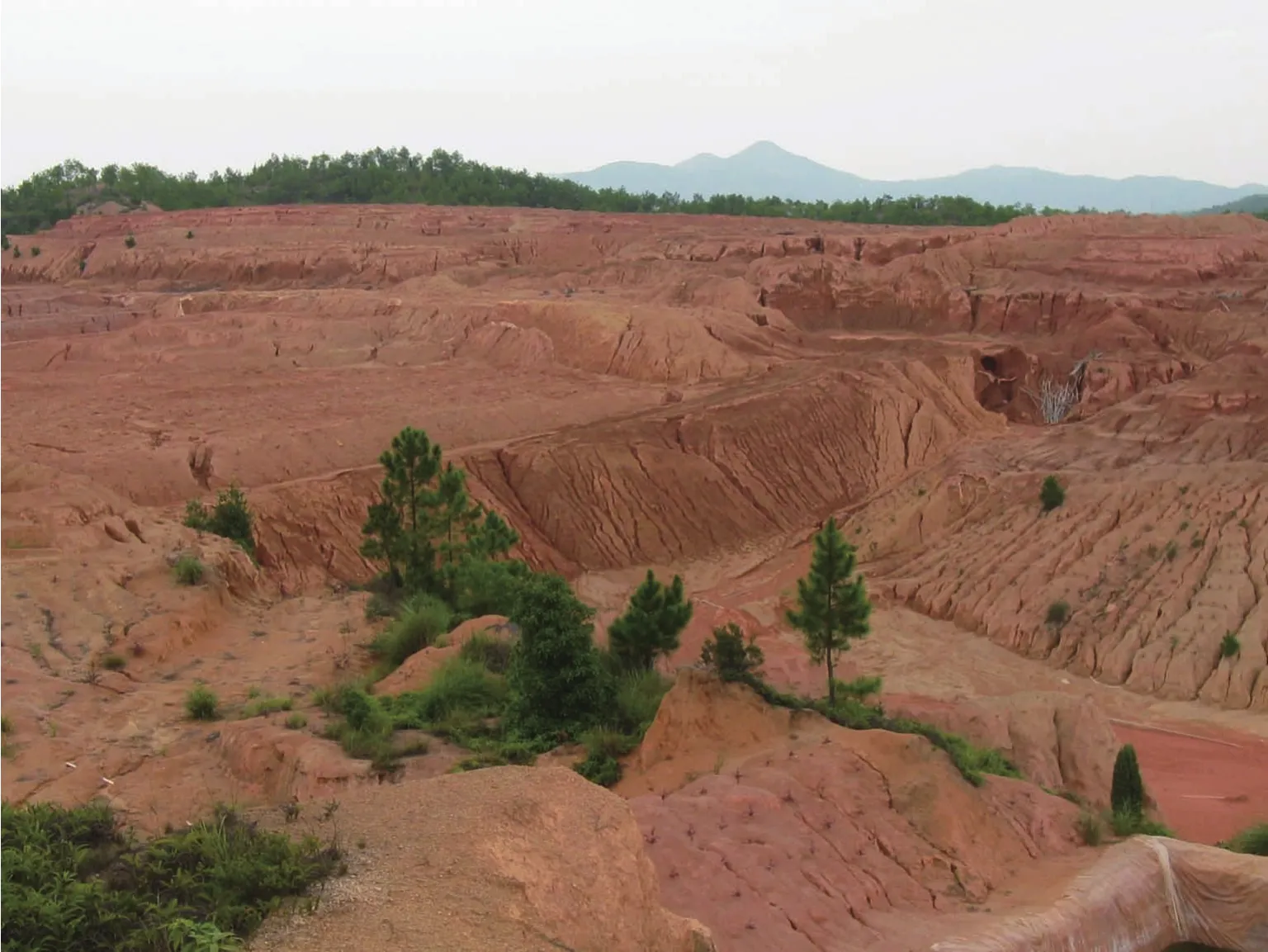
Fig. 7.Environments of an ion-adsorption type REE deposit in South Jiangxi after mining by “heap-leaching”.
4. Future outlook
In the last few years, new methods, new technologies and new concepts have been widely applied in ion-adsorption REE resources exploration in South China, and a series of progress had been obtained, which will or have already benefit our society and the economy. However, there are still many problems left to be solved and a lot of challenges researchers have to be faced on scientific studies of ionadsorption type REE deposits, and how to rationally evaluate the resources, how to optimize exploitation plan, how to strengthen mining management and how to exploit them in a green way, are all practical problems that need to be urgently solved. To address these problems, a lot of geological works needs to be undertaken:
Firstly, further research on the fractionation, migration and enrichment of REEs in the weathering profile should be taken. Of all the REEs, Cerium (Ce) is the most peculiar one because it is extremely difficult to form ion-exchangeable Ce.Ion exchangeable REEs in ore bodies could account for 40%–95% of the whole REE contents, its occurrence state in the regolith is markedly different from whole rock REEs, but the ion exchangeable REE contents are difficult to be quantitatively analyzed. Thus, only when the distribution characteristics and sources of “ion-exchangeable REE ” in regolith are identified, could we be able to possibly discover the basic regularities regarding “ion-exchangeable REE ”dilution and enrichment so as to guide the exploration of Eu,Tb and Dy minerals. This work is yet to be done.
Secondly, the REE product must be deeply studied. REEs are regarded as one group, very few researches have been conducted to explore the geochemical behaviors of a single element, and even REE composition in primitive granite is looked on as the composition of final products. The types of REE mineral in parent rocks are different, the composition of ion-exchangeable REE in weathering crust have corresponding differences. Therefore, for each REE deposit,in-depth research should be done on what the products that produced eventually are.
Thirdly, mining approaches must be improved, focusing on parameters in the in-situ leaching -techniques and creating an index system to meet requirements of environmental protection. In order to fully use the resources and considering the environmental issues and geological disasters, new methods should be adopted. Though the in-situ leaching technique seems to be easy, it will seriously change the environment if not been well understood and properly applied.For this reason, some institutions and enterprises have been investigating how to improve the technique. However, owing to the confidentiality of such techniques, different enterprises are reluctant to mutually disclose it, and the competent authorities have not yet developed a complete set of technical indexes for the leaching technique, such as the formula of the leaching solution, as the density of fluid-injection holes, as the slope of the diversion tunnel and as the water permeability of the inversion of the mineral bodies. These technical parameters are universal but they must be used based on the practical situation of each mines, for example, the thickness and slope of the weathering crusts, the geological characteristic of the granites, the development of the fracture fissure and the types of REEs etc., which are all important factors that influence in-situ leaching, and therefore must be comprehensively studied.
Fourthly, the current REE mineral geological exploration norm has not adapted to the rapid development of REE industry and needs modification. Especially for the management of current REE mineral types which are divided into three categories: LREE, HREE and MREE, or just LREE and HREE in some cases, and sometimes even not being divided. In fact, different REEs greatly vary in their prices and application. If they are not separated, the value of some important REE, such as Eu, Tb, Dy, will be neglected.
5. Conclusions
Ion-adsorption REE resources are valuable wealth to humankind, the demand of which will be continuously increasing in the future. The geological background and occurrence conditions of the deposits are basically clear at present. So, countries with similar metallogenic conditions should be encouraged to investigate and exploit this type of deposits. The comprehensive utilization value of all 15 rare earth elements should be enhanced, in order to prevent the waste of REE resources. There exists a phenomenon of abandoning the low-grade and exploiting the rich, and abandoning the low-value and exploiting the high-value during exploitation, so it is necessarily significant to ensure the rational exploitation and utilization of the rare earth resources. The protection of the environment is a serious challenge for the exploitation of ion adsorption REE resources in China. The developed countries that consume more REE should actively provide treatment technology to prevent environmental pollution from REE mining, thus help to guarantee the sustainable development of REE resources in the world.
Acknowledgment
This study was financially supported by the Geological Survey Projects of China Geological Survey (DD20160056 and DD20160346) and the special fund of the Chinese Central Government for basic scientific research operations in Commonwealth Research Institutes (K1506). The authors are grateful to the constructive comments of the reviewers.
杂志排行
China Geology的其它文章
- International Union of Geodesy and Geophysics: 27th General Assembly Conference
- Introduction of the Beijing SHRIMP Center (National Science and Technology Infrastructure)
- Features of micro-fabric and the genetic study of Triassic deep polyhalite in the Guang'an area, central Sichuan Basin
- Land submerged to carbonate platform by conodonts: paleoenvironment reconstruction of the western Gangdese in Tibet during Triassic
- An overview of the resources and environment conditions and major geological problems in the Yangtze River economic zone, China
- Geological characteristics, metallogenic regularities and the exploration of graphite deposits in China
